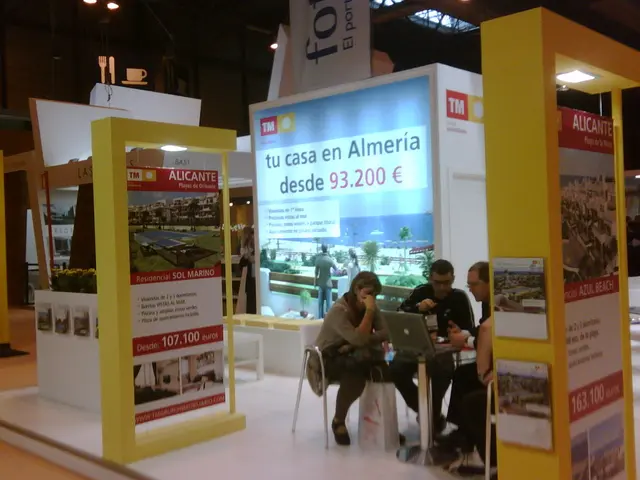Thriving Ecosystem Construction: Building a Permaculture Pond
A permaculture pond is more than just a water feature; it's a self-sustaining, eco-friendly, and productive element in a sustainable landscape. Here's a step-by-step guide to designing, building, and maintaining a thriving permaculture pond that supports a diverse ecosystem.
Design and Site Selection
Choosing the right location is crucial. Look for a slight depression or contour line that collects water efficiently, and consider incorporating keyline design principles to manage water flow across the landscape. Plan for diverse habitat zones around the pond, including shallow edges, deeper water, and surrounding planting areas to support wildlife and microhabitats.
Building the Pond
Excavate the pond with varied depths, creating shallow shelves for emergent plants and deeper areas for aquatic fauna. Use natural materials or environmentally safe pond liners to hold water without chemicals. Include inflow and outflow channels to support continuous water movement, and consider integrating a small recirculating waterfall or aeration system powered by a solar pump to enhance oxygenation and microclimate humidity. Shelter fish and wildlife with submerged logs, stones, and floating plants.
Establishing the Ecosystem
Plant native aquatic and marginal species around and in the pond to provide food, habitat, and support natural water filtration. Introduce beneficial organisms such as frogs and native aquatic invertebrates to establish ecological balance and pest control. Consider introducing a mix of fish species that are compatible with natural pond ecosystems, promoting a self-regulating system where fish waste nourishes plants, and plants purify the water.
Maintenance and Sustainability
Avoid chemical inputs; use compost teas or mulches to support soil and water health around the pond. Monitor water levels and quality, topping up with rainwater when necessary and managing inflow/outflow to prevent flooding or drying out. Maintain plant diversity to ensure continuous habitat support and prevent domination by invasive species. Encourage a layered planting design around the pond, with trees and shrubs planted in guilds to improve soil, provide shade, and create habitat. Mulching and covering bare soil nearby helps retain moisture and reduce runoff, protecting the pond ecosystem.
By integrating these elements, you create a self-sustaining permaculture pond that naturally supports diverse life forms, conserves water, and enriches the broader ecosystem over time. Utilizing natural topography, diverse native plants, and closed-loop nutrient cycles ensure minimal external inputs and resilient long-term functionality. Incorporating small mechanized aids like solar-powered water recirculation can further enhance pond health without compromising sustainability.
Establishing a thriving ecosystem in a permaculture pond involves adding various plants, letting microorganisms, insects, and wildlife naturally join, and incorporating aquaculture for food production and algae control. Online resources, books, and local groups offer valuable tips on designing, building, planting, and caring for a permaculture pond.
Ponds can be designed to prevent landslides, serve as fish ponds, irrigation systems, and sediment traps, effectively reducing the risk of flooding downstream. A permaculture pond can help with water conservation and irrigation by collecting rainwater or runoff, cutting down on the need for outside water sources.
A diverse range of plants, including emergent, oxygenating, floating, and deep marginal plants, is important in a permaculture pond. A well-designed permaculture pond boosts the health and resilience of local ecosystems.
Maintaining a permaculture pond involves monitoring water quality, algae levels, and debris, being gentle in making changes, and avoiding the use of pumps or filters that can disrupt the pond's natural cleaning process. Permaculture ponds attract various wildlife species, including pollinators and amphibians.
The location, size, and depth of a permaculture pond are crucial for its success. The pond should be placed to catch rainwater, be the right size for the intended species, and have a depth of 60 cm for warmth and variety of aquatic life. Aquaculture in a permaculture pond can include edible plants such as water chestnuts, watercress, water spinach, and water lilies, as well as fish and other aquatic animals that fit well with the pond's ecosystem.
Permaculture ponds use water harvesting, aquaculture, and natural pool ideas to work effectively without pumps, filters, or chemicals.
Read also:
- discovery of substantial 'white gold' reserves worth $540 billion beneath California's Salton Sea, potential game-changer for U.S. energy self-sufficiency confirmed by scientists
- Organic Avocado Mattress for sleep: Essential for a Healthy Rest
- Increase in Green Jobs by 48% in India, primarily fueled by Generation Z and secondary cities: Study reveals
- Airbus' direct greenhouse gas emissions, specifically from burning jet fuel, are lessened via the use of Sustainable Aviation Fuel.







